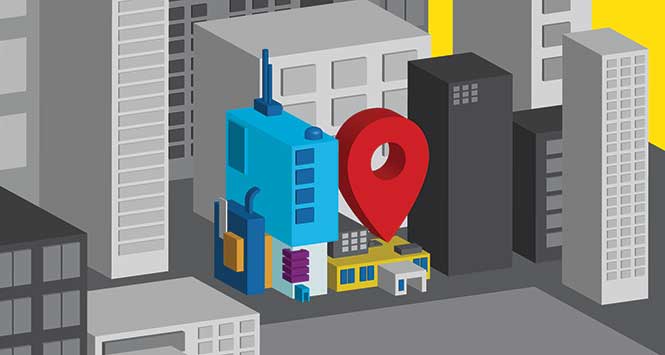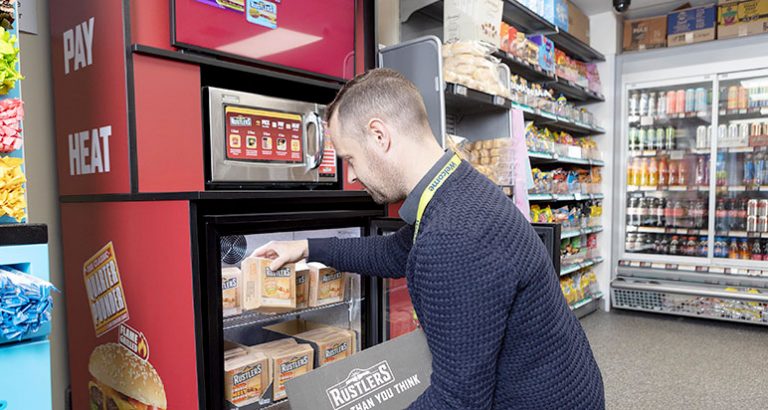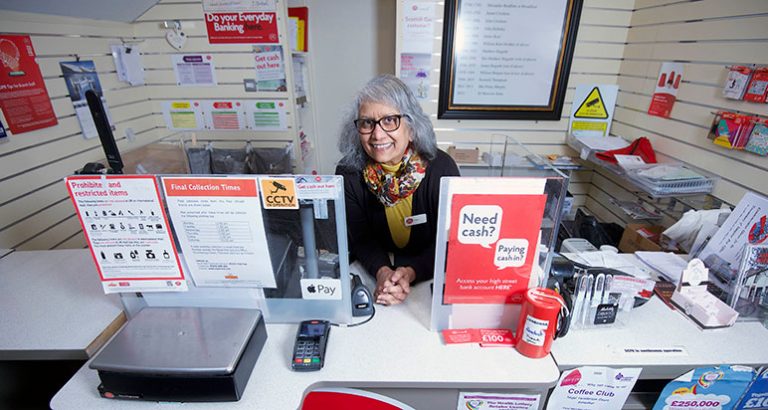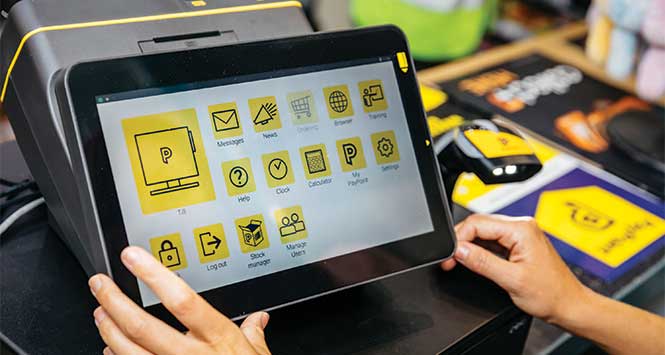Fierce competition and ever-rising costs mean the prevailing convenience model of price competition and promotion-obsession may be ending – so is the answer a fresh look at creating ‘destination stores’?
by Antony Begley
The concept of the ‘destination store’ is a not a new one in local retailing. It’s something that’s been vaguely talked about for many years, but it’s not a concept that has truly caught hold in Scotland. Most c-stores, if we’re being honest, have typically sold roughly the same ranges in stores that roughly resemble one another in most meaningful ways.
The painful reality is that the convenience sector has allowed itself to be drawn into a battle with the multiples and the discounters on terms that massively favour our larger scale retail cousins.
“One of the biggest failings of our sector in general has been to allow ourselves to get caught up in trying to compete with Asda and Lidl and Tesco on price,” says Dan Brown, Manager of Nisa Pinkie Farm Convenience in Musselburgh.
“There was only ever going to be one winner in that battle in the long term, and I think that’s what we’re discovering now as our costs continue to escalate across the board and our old model of targeting 20% GP is no longer sustainable. Sure, price is important, but it shouldn’t be what sits at the heart of our offer as local retailers.
“What we need to offer our customers are great reasons to come here rather than go to a supermarket or any other competitor. We need products and services where the quality and experience are what matter most, not the price.”
There is little doubt that Dan’s view is one that is shared by an increasing number of retailers. The evidence of a recent spate of newbuild stores and major refits suggests the way forward for local retailers in Scotland will see the sector attempt to shift the shopper’s focus away from price.
“Focusing almost exclusively on price has ended up being a race to the bottom,” agrees Abdul Majid of Nisa Bellshill. “We’re all competing with each other to see who can be the cheapest and the consequence of that is a massive erosion of margins. With costs going through the roof, it’s only now that the industry is starting to accept that we need to rebuild our margins if we want to have a long-term sustainable future. And to achieve that, we have to do things differently.”
In other words, it’s time for a fresh look at the concept of the destination store.
Back to brass tacks
To get back to basics, what is a destination store? In its simplest sense, a destination store offers products, services and benefits that customers can’t easily get anywhere else in the area. Becoming a destination store drives footfall and footfall drives sales.
The question to ask yourself, says Abdul, is: “Why should a shopper pass another store to get to mine?”
The inverse of that, obviously, is that offering what everyone else offers means there’s no reason why a shopper should pass another store to get to yours. Pricing and promotions are looking less and less like USPs as time goes by. Indeed, it could be argued pricing and promotions are more important to retailers than they are to shoppers.
Broadly speaking, the promotional packages from the various symbol groups are very similar.
Ask yourself…
If price isn’t the key to future sales and profits, what is? It’s worth returning to Abdul’s question about why shoppers would pass another store to get to yours.
There are a thousand answers to that question but a differentiated range is what matters. Yes, convenience store shoppers love the friendly staff and the short waiting times and the convenient locations – but the future will be about offering a range of products and services that gives shoppers compelling reasons to visit your store in particular.
“I absolutely believe this idea is critical to the success of our industry,” says Dan Brown. “So much so that we’re currently just finishing a massive refurb of the store to allow us to focus more heavily on categories and products that our shoppers can’t get anywhere else nearby. For us that means a much bigger focus on hot and chilled food-to-go, a Skwishee machine, a Costa coffee machine, a bigger fresh range, local produce like beers, bakery and butchery, an enlarged vaping range and so on.”
Higher margins
One thing that most of these newly-added lines have in common is high margins, as Dan explains: “This is a big store, so we have a lot of staff. This means a big wage bill that’s only getting bigger every year with the minimum wage, so we’ve also focused on bringing in new products and services that deliver much bigger margins. When I took over the store last year, we were around about the 21% mark – we’re now up to about 25 or 26% and we’re aiming for 30%. You can’t achieve that just by selling a traditional convenience range of soft drinks, crisps and cigarettes.”
This new focus on USPs has also impacted on the layout of Dan’s store, with many of the high margin footfall-driving new offerings all sited in a bank by the front door to shift customers’ focus onto these lines to drive up high value, high margin impulse sales.
“If customers are coming in for bread and milk or a tin of beans then they’ll find them, but we want to tempt them into buying a coffee and a sandwich or maybe a pizza and a Skwishee while they’re here,” he says.
Dan readily admits that this food-to-go-to-the-fore approach was influenced by some of the work his father is doing in new Spar stores across the country. Stephen Brown heads up food-to-go at Spar Scotland wholesaler and retailer CJ Lang and has been instrumental in the look and feel of the latest company-owned Spar store to open, Havannah St in Glasgow (see full store profile, p28). This store also focuses heavily on food-to-go and features a similar bank of coffee machines, doughnuts, Costa machine and Skwishee unit at the front door.
Stephen comments: “We very much see the future as building destination stores, offering customers great quality products and services they can’t get anywhere else. This allows for more margin as shoppers are happy to pay a premium for a great cup of coffee, a freshly-baked locally-sourced pie or a Skwishee. These products haven’t been commoditised so what’s important to shoppers is the experience and the taste – not the price.”
Kick the habit
If retailers can successfully help shoppers kick the promotions and price habit, there is a bright future out there after all. “One of the benefits of being an independent retailer is that you can act quickly and bring in new products and services quicker than the multiples or discounters,” says Abdul Majid. “We also have much closer relationships with our shoppers so we are able to understand them and learn what new products and services they might be interested in buying or using.”
Finding new products and services that will drive footfall and make your store a destination store is not as daunting as it might appear. There are lots of learnings to take from other retailers across Scotland to set you on the right path, then it’s up to you to make your own way and start piling USP upon USP to make sure that there are lots of reasons why a customer would pass another store to get to yours.
To help you find ways to bring customers to your door and give them compelling reasons to use you rather than anyone else, SLR offers a few ideas that might work….
The original footfall drivers:
Post Office
Very few services drive footfall quite like a post office. HIM research shows that 93% of shoppers are more likely to choose a store because it has a post office, with 39% of customers travelling more than half a mile to visit a store with a post office. In fact, 68% of shoppers first began using the store when it added a post office.
Opening a Post Office Local branch means you effectively become the shop, the bank and the post office in your community.
It’s also a quick and efficient way of generating new footfall and sales. On average, it takes less than 30 seconds to serve a post office customer – and the new footfall opens a world of possibility when it comes to impulse and semi-planned purchases. One in three post office customers buy three or more items in the shop.
PayPoint
PayPoint has significantly upped its game of late. It has demonstrated much more willingness to listen to retailers, understand their concerns and start addressing them with new ways to leverage the service to do everything from reducing banking costs to improving their Epos systems – but the core PayPoint service remains a hugely important footfall driver for stores.
Offering PayPoint will bring shoppers to the store – the key question is what you do with those shoppers when they arrive.
Fresh ideas:
Food-to-go
It’s the most important trend in retail and it’s a footfall driver par excellence. The one key challenge here is doing it well. Food-to-go works best when it’s professionally presented and maintained. It’s all about customers’ confidence in the offer. There are more solutions than ever available, so take your time and choose wisely.
Skwishee
The runaway success story of the last few months, retailer Harris Aslam’s Skwishee carbonated slush solution has been a massive hit with retailers and shoppers. With over 50 installations so far and counting, Skwishee is delivering big sales and big margins – typically 64% – to more and more retailers across Scotland.
With new flavours coming online on a regular basis and the novelty twist of an edible straw, Skwishee is a true home-grown success. With prices up to £2.99, the product is helping drive footfall, big basket spends and huge cash margins.
Pizzas
One of the biggest challenges facing retailers with food-to-go offerings is extending the sales period beyond the traditional breakfast and lunchtime slots. Freshly baked pizzas are a great, no-fuss way of doing that and bringing shoppers to your store in the evening.
Delivering great margins and top-quality experiences, pizzas are also a great foundation for building bigger basket spends.
Coffee
No modern store is complete without a coffee machine – and ideally a high-quality bean-to-cup machine. Today’s shoppers are so used to high quality coffee that anything less just won’t do. Coffee is the cornerstone of a food-to-go offering.
F’Real Milkshakes
The US premium thick-shake has something of a cult following among a certain age of consumer and will certainly draw shoppers from further afield. You’ll find them in many a store these days, including all new Spar stores.
Dessert Bars
The Scots’ sweet tooth makes the dessert bar an attractive option for retailers thinking about a destination store, offering the opportunity to drive up basket spend with premium-priced treats such as waffles, pancakes and ice cream. It also gives shoppers another good reason to visit your store rather than someone else’s.
Tango Ice Blast
A phenomenon of recent times, Tango Ice Blast has built up a huge following with shoppers happy to pay very premium prices for the experience. Installation is relatively complex but once the machine is up and running it’s plain sailing.
Vaping
The multiples and discounters haven’t managed to corner the vaping market yet, which leaves local retailers the chance to build strong, regular repeat custom with a good range of vaping products. Staff knowledge is key but get it right and you’re laughing all the way to the bank. Vapers will also travel significant distances for a store that meets their requirements.





